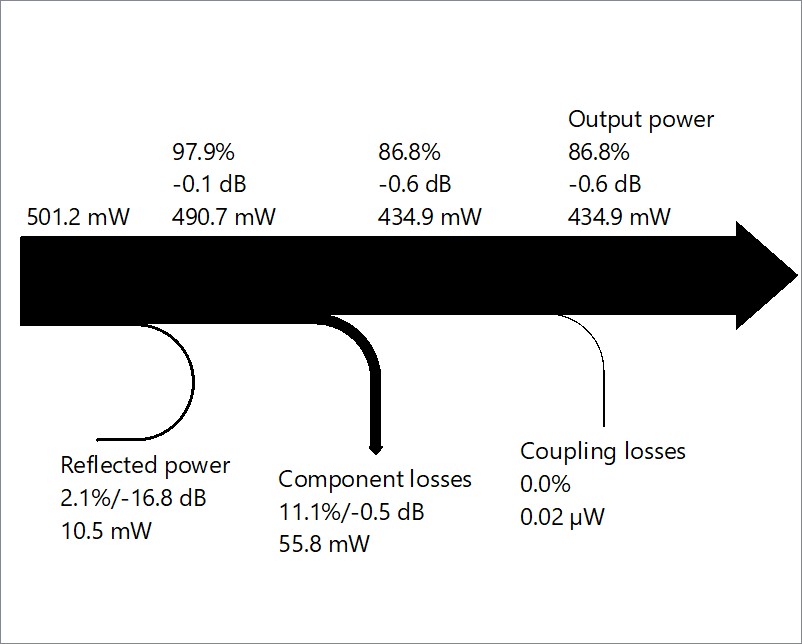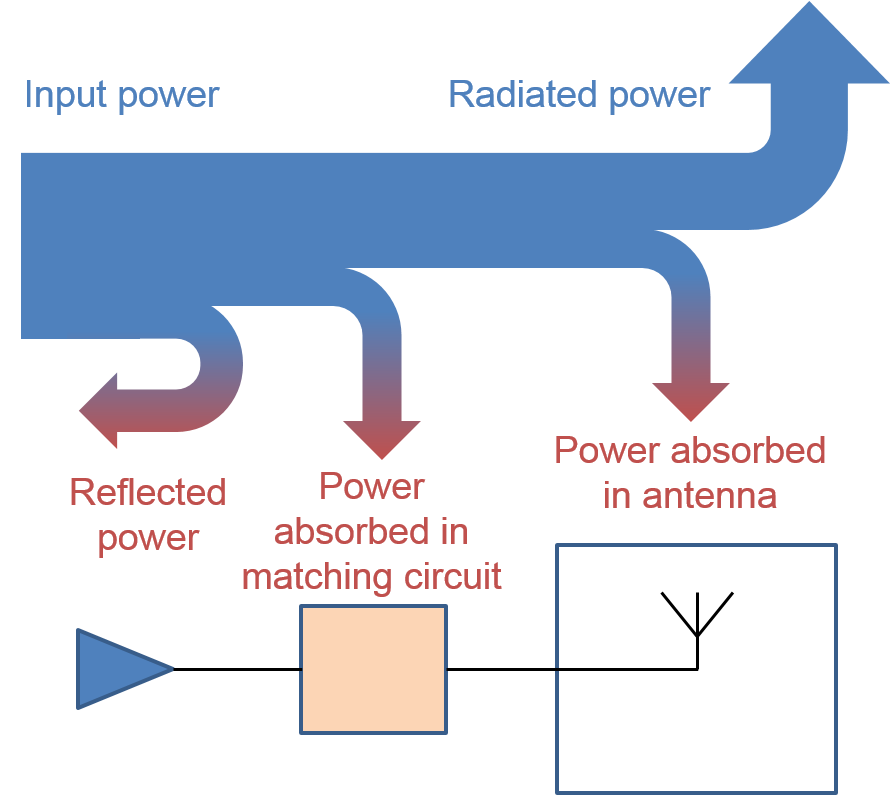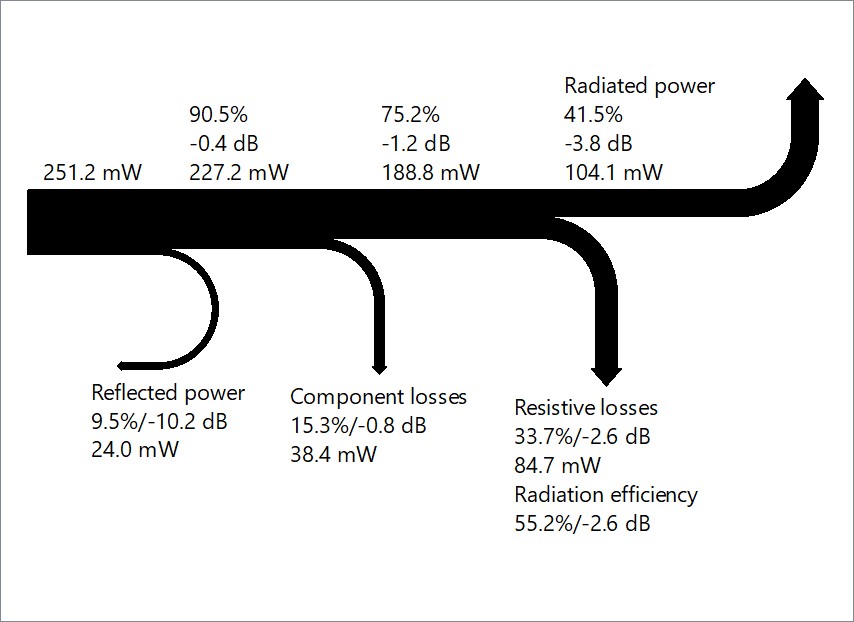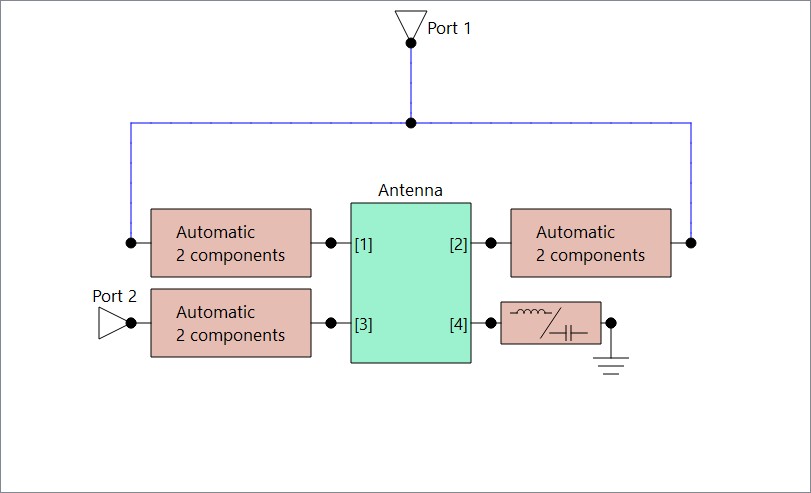We also generalized the power balance plots to general RF systems, which do not have an antenna component. In this setup, Optenni Lab can easily show the power flow between a pair of external ports, where the goal is to maximize the power coupled to the target port (marked as “Output power”) and the power coupled to any other ports is considered as a loss (labeled “Coupling losses” in the image below).

All the examples above assume that only one port is fed at a time. But Optenni Lab can also calculate the power balance plots for a simultaneous multiport excitation, such as in antenna arrays, where special emphasis needs to be placed on the active reflection coefficient and the dependence of the radiation efficiency on the feeding amplitudes and phases.
How does Napoleon then enter the picture? Well, during the IMS2023 exhibition I was demonstrating Optenni Lab and the power balance visualization to various customers and then two engineers independently remarked that the power balance plots resemble the visualization of the losses of Napoleon’s army during his infamous invasion to Russia during 1812.
Indeed, I studied Wikipedia and discovered the visualization by French engineer Charles Joseph Minard from 1869, which indeed uses related visualization techniques:

Source: Wikimedia commons.
From the visualization one can see the dramatic loss of life during this ill-fated campaign: over 400 000 solders started the march to Russia. Only some 100 000 reached Moscow and out of those only 4000 solders returned alive, others being eliminated by disease, exhaustion, and bitter cold. Quite a path loss!
In summary, we adopted a data visualization technique which is more than 150 years old to describe the power balance in antenna matching circuits and in general RF circuits. If your boss insists on focusing on the minimization of reflected power, you can use these plots to highlight the importance of maximizing the antenna efficiency instead.
CEO Jussi Rahola
Email: jussi.rahola (at) optenni.com








